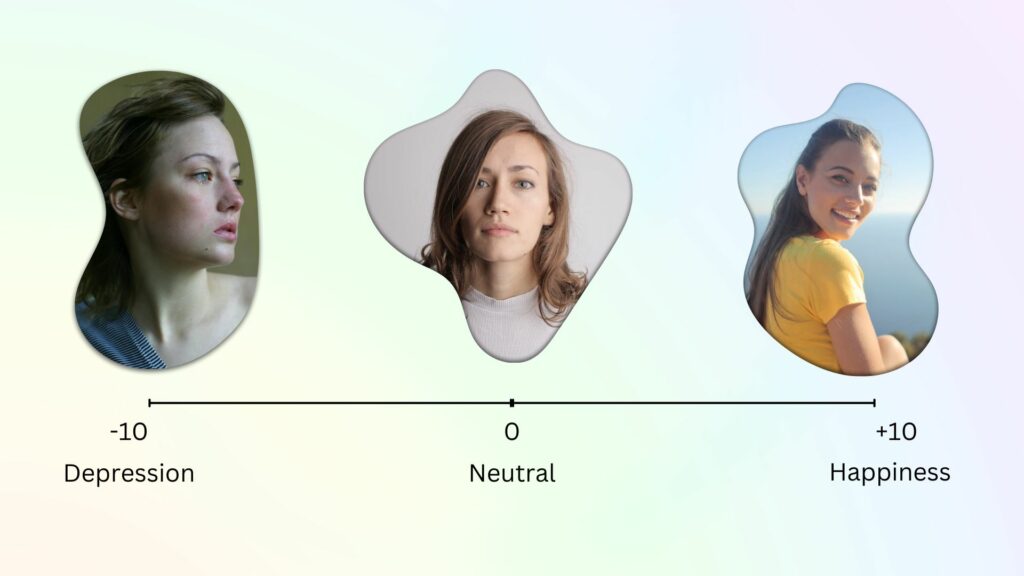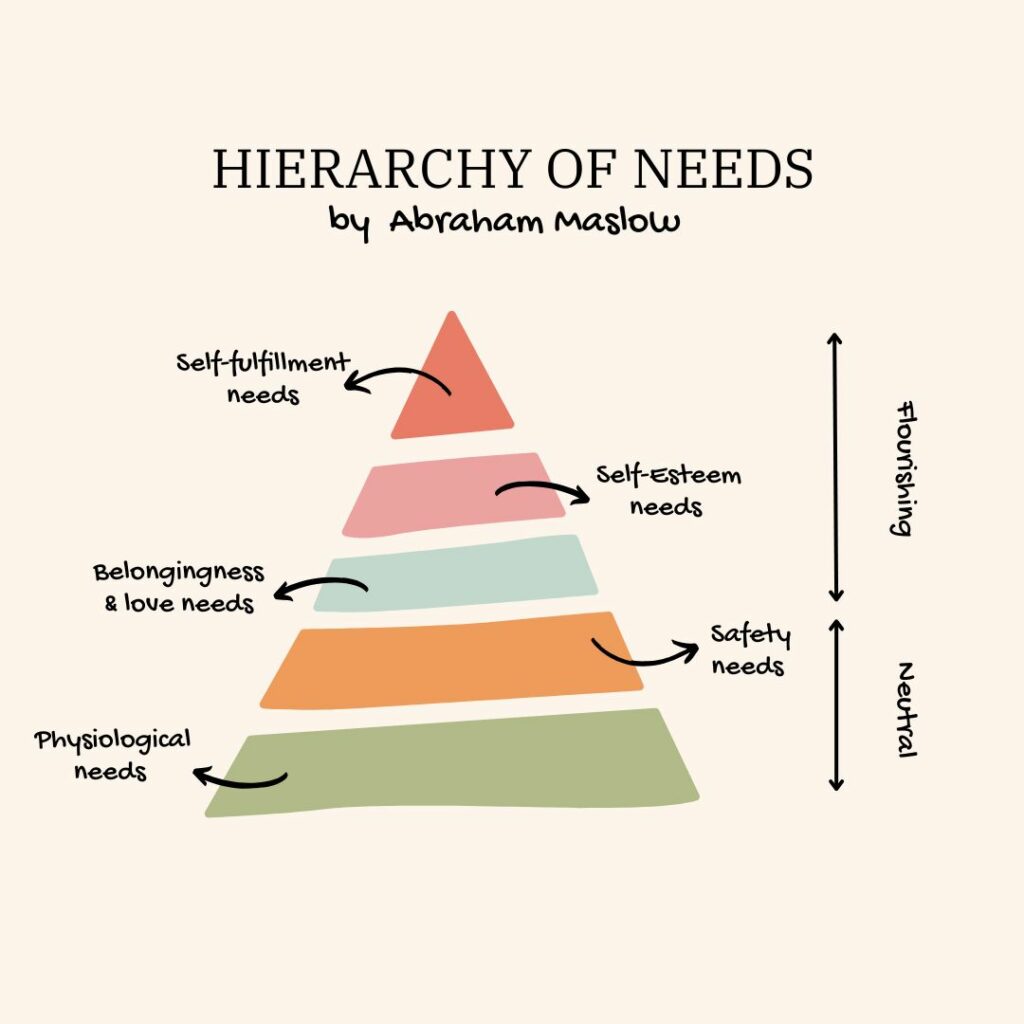Therapy and Happiness: Why Am I Still Not Happy After Therapy?
Therapy and happiness are two concepts often intertwined but not always synonymous. For many people, therapy provides a lifeline during challenging times, helping them manage mental health struggles and regain stability. However, while therapy can lead to healing and relief, it doesn’t always result in long-lasting joy or fulfillment. Many people find themselves asking, “Why am I still not happy after therapy?”
This blog explores the nuanced relationship between therapy and happiness. While therapy is essential for addressing depression and other mental health challenges, achieving true happiness often requires additional steps. We must learn how to be happy. Moving from pain to peace is one part of the journey; moving from peace to flourishing is another. By understanding the role of therapy and learning how to cultivate happiness beyond it, individuals can find a path toward not just surviving but thriving.
For those who’ve experienced happiness after depression, it’s clear that relief from sadness is a critical first step. Yet, happiness isn’t merely the absence of pain—it’s the presence of joy, purpose, and connection. This post will guide you through why therapy for happiness may require a dual approach: treating mental health issues and building a life that inspires fulfillment and growth. Let’s explore this important journey and discover how to be happy together.

The Story of a Client—Not Depressed but Not Happy
After years of battling relentless waves of depression, Tina finally sought therapy. It was a long-overdue step, driven by her desire to break free from the sadness that had clouded her life. With the help of her therapist, she slowly found relief from overwhelming emotions, developed tools to navigate her mental health, and learned how to manage her daily challenges. Over time, Tina’s depression lifted, and she began to describe herself as “fine” and “functioning.”
However, despite the progress, Tina couldn’t shake the feeling that something was missing. She wasn’t crying herself to sleep anymore, and the heavy weight of sadness had eased, but she didn’t feel the joy she had once imagined. While therapy had effectively moved her from -10 on the emotional scale (deep depression) to 0 (a state of neutrality), she realized that this was only part of the journey. She was no longer suffering, but she also wasn’t thriving.
Tina’s story illustrates a common question many people ask: Can depressed people be happy? Can they become happy? Therapy plays a crucial role in alleviating depression, but it doesn’t automatically lead to fulfillment. Happiness isn’t just the absence of sadness; it’s about feeling connected, purposeful, and excited about life. Tina had overcome depression but hadn’t yet figured out how to truly be happy again after depression.
This disconnect reveals an important truth about therapy and happiness: addressing mental health challenges is only the first step. True well-being involves more than avoiding pain—it requires actively cultivating joy, meaning, and self-actualization. Tina’s story serves as a reminder that while therapy provides the tools to heal, happiness often requires additional growth.
The Salutogenic Approach vs. the Pathogenic Approach
Traditional psychology often focuses on the pathogenic approach. This model aims to diagnose and treat mental illnesses, moving individuals from a state of dysfunction (-10) to neutrality (0). While this approach is essential for addressing conditions like depression or anxiety, it stops short of fostering well-being.
In contrast, the salutogenic approach in positive psychology looks beyond simply fixing problems. It focuses on enhancing strengths, building resilience, and creating meaningful, joyful lives. Instead of stopping at 0, the salutogenic approach seeks to move individuals from 0 to +10, helping them thrive.
The difference between these two models can be likened to physical health. Traditional medicine addresses illness, while wellness programs promote overall vitality. Similarly, therapy for happiness requires moving beyond the pathogenic focus on removing problems to cultivating growth and flourishing.

Absence of Depression vs. Happiness – Why They’re Not the Same
One of the biggest misconceptions about mental health is that the absence of depression equates to happiness. While therapy can alleviate symptoms of depression, this doesn’t automatically lead to joy, meaning, or life satisfaction. Happiness and mental health are connected but distinct.
Imagine a garden full of weeds. Therapy is like pulling out the weeds—it creates the conditions for growth but doesn’t plant flowers. To cultivate happiness, we need to plant and nurture positive experiences, relationships, and goals. This is why transitioning from depressed to happy involves a two-step process: relieving depression first, then actively pursuing growth and fulfillment.
The shift from 0 to +10 requires practices that promote well-being, such as gratitude, mindfulness, and pursuing meaningful goals. It’s a journey that goes beyond recovery and surviving to include thriving.

Maslow’s Hierarchy and the Salutogenic Approach
Maslow’s hierarchy of needs provides a useful framework for understanding the contrast between the pathogenic and salutogenic approaches. The bottom two levels—physiological needs (e.g., food, shelter) and safety (e.g., security, health)—align with the pathogenic focus. Meeting these needs prevents dissatisfaction but doesn’t create happiness.
The upper levels—love and belonging, esteem, and self-actualization—correspond to the salutogenic approach. These needs drive connection, purpose, and fulfillment. While the lower levels address survival and are therefore vital, the higher levels enable us to flourish. The journey from depression to happiness requires climbing beyond basic needs to pursue growth, meaning, and self-actualization.
This framework underscores why traditional therapy alone may leave clients feeling “fine” but not truly happy. Meeting basic needs is necessary but not sufficient for well-being.

From -10 to +10: A Complete Guide
The journey from depressed to happy requires a deliberate, two-stage approach. It’s not enough to simply eliminate negative emotions; true happiness involves cultivating positive feelings, relationships, and purpose. Moving from -10 to 0 focuses on overcoming depression, while moving from 0 to +10 emphasizes growth and flourishing. Here’s a comprehensive guide to navigating this journey.
Stage 1: Address Depression (Moving from -10 to 0)
The first step in achieving happiness after depression is addressing the symptoms and challenges that come with it. Depression creates emotional, mental, and physical barriers to well-being, so focusing on foundational recovery is essential. Here are the key steps:
- Seek Professional Help
Effective treatment begins with therapy. Evidence-based approaches like Cognitive Behavioral Therapy (CBT) or Rapid Transformational Therapy (RTT) provide powerful tools to reframe negative thought patterns, address trauma, and build healthier coping mechanisms. Partnering with a qualified therapist is critical for managing therapy and happiness during this stage. - Build a Support System
Depression often isolates individuals, making connection vital. Lean on trusted friends, family members, or support groups to reduce loneliness. Honest conversations and emotional support can provide a strong foundation for recovery. - Practice Basic Self-Care
Restoring physical health supports mental health. Prioritize quality sleep, balanced nutrition, and regular exercise. These activities that help depression relief are simple yet powerful ways to improve mood, energy, and resilience. - Identify Triggers
Understanding what exacerbates depression is key. Work with a therapist to recognize patterns, environments, or situations that trigger negative emotions. Awareness helps in creating strategies to minimize their impact. - Develop Coping Strategies
Learn tools to navigate stress and build emotional resilience. Mindfulness meditation, journaling, and breathing exercises can help calm the mind and reduce the intensity of depressive episodes. These techniques also create space for emotional growth.

Stage 2: Learn How to be Happy & Cultivate Happiness (Moving from 0 to +10)
Once depression is under control, the focus shifts to building a life of joy, purpose, and connection. The salutogenic approach to well-being emphasizes thriving rather than just surviving. Here’s a simple guide on how to be happy and how to cultivate happiness daily:
- Pursue Meaningful Goals
Happiness stems from working toward goals that align with your values and passions. Ask yourself what brings you joy and purpose. Avoid shallow aspirations and focus on long-term fulfillment. - Practice Gratitude
Gratitude rewires the brain for positivity. Regularly reflect on the things you’re thankful for, whether it’s a supportive friend, a beautiful sunset, or small victories. Keeping a gratitude journal can help make this habit part of your daily routine. - Foster Positive Relationships
Relationships are a cornerstone of happiness and mental health. Make time to nurture connections with family, friends, and loved ones. Share your joys, listen deeply, and celebrate each other’s successes. - Engage in Flow Activities
Find hobbies or activities that fully absorb your attention, creating a state of flow. Whether it’s painting, hiking, or playing an instrument, these moments of immersion bring deep satisfaction and help you feel truly alive. - Cultivate Resilience
Challenges are inevitable, but resilience turns setbacks into opportunities for growth. Reframe failures as learning experiences and remind yourself that struggles are a natural part of life’s journey. Over time, this mindset builds strength and adaptability. - Focus on the Present
Mindfulness for happiness is a powerful practice for finding contentment. Take time to savor the present moment, whether through deep breathing, mindful eating, or simply observing your surroundings. This awareness helps you appreciate life as it is. - Give Back
Acts of kindness and generosity contribute to happiness. Volunteer, mentor, or help someone in need. Giving is receiving. - Create a Vision Board
Visualization can inspire and guide your journey. Design a vision board with images and words that reflect your goals and dreams.
The Path to Thriving
This two-stage process—addressing depression first and then building happiness—ensures a holistic approach to well-being. Moving from -10 to 0 provides relief and stability, while going from 0 to +10 creates joy and fulfillment. For those feeling ‘not depressed but not happy’, this guide offers actionable steps to reclaim purpose and passion.
The salutogenic model reminds us that therapy and happiness are linked. However, simply addressing an issue does not automatically cultivate happiness. Therapy is crucial for overcoming challenges, but discovering how to be happy involves intentionally cultivating a life of meaning and connection. By following these steps, you can be happy again after depression and move toward a flourishing, fulfilling future.
Learn more about how to be happy by building habits for happiness.

How We Can Support Your Journey
At 4HappyU, we offer tailored support for every step of this journey. For clients in step one, our Rapid Transformational Therapy (RTT) provides effective tools to address limiting beliefs, trauma, and depression. RTT combines hypnosis with cognitive techniques to achieve rapid, lasting relief.
For those ready to move from neutral to flourishing, our positive psychotherapy and positive psychology coaching programs help clients cultivate strengths, set meaningful goals, and create lives filled with joy and purpose. Whether you’re seeking to address depression or discover how to be happy and unlock greater happiness, our services provide the guidance you need.
You can start your journey right now at https://guide.4happyu.com/.
Conclusion: The Journey to True Happiness
If you’ve ever wondered, “Why am I still not happy after therapy?”, you’re not alone. Therapy is a vital first step in addressing depression, but true happiness requires going beyond neutrality to embrace growth and flourishing. By understanding the salutogenic approach, cultivating positive emotions and practices, and continuing the journey of self-actualization, we can create lives that are not just free of suffering but filled with joy, connection, and purpose.
Resources
The information in this article is grounded in scientific research. If you’re interested in specific studies, feel free to reach out to us.
For daily doses of joy, positivity, inspiration, and motivation, be sure to follow us on Instagram at 4HappyU.
Za naše bralce v Sloveniji
Če vas zanima več o psihoterapiji in iskanju trajne sreče, preberite naslednje članke: Psihoterapija Obala, 5 ključev do trajne sreče in notranjega miru, Najboljši psihoterapevti v Sloveniji: Kako se hitro spopasti s stresom, Psiholog v Kopru: Kako odpraviti težave s psihoterapijo in RTT terapijo, in Psihoterapija Online: Prednosti in učinkovitost terapije na daljavo.


